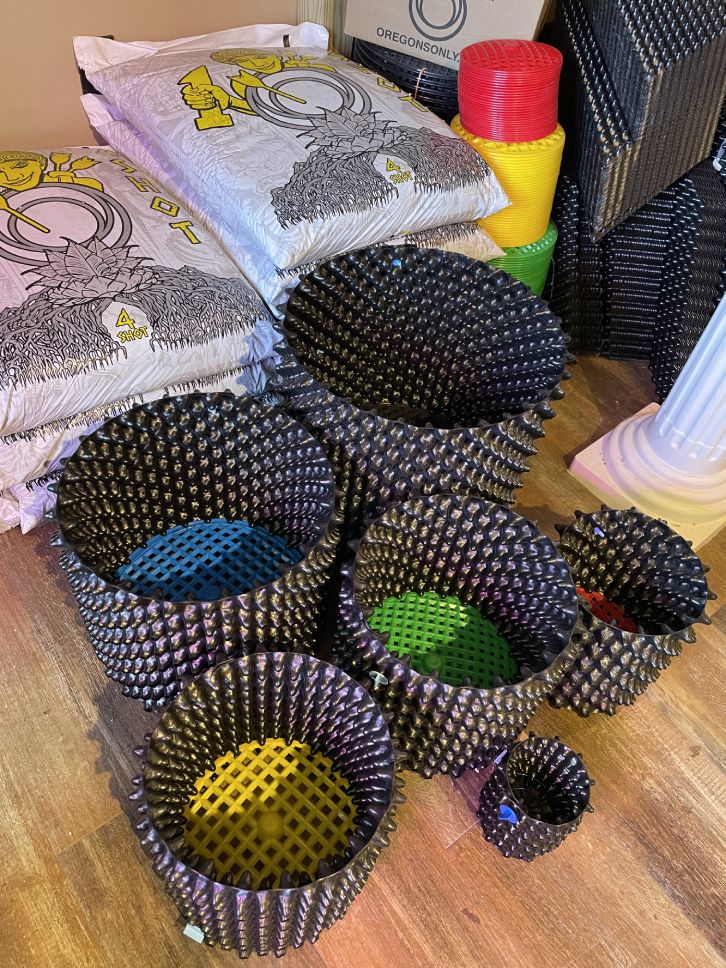The Indoor Earthworm: The Unsung Hero of Indoor Composting
Wiki Article
Mastering Hydroponic Nutrient Solutions for Healthy Plants
In the detailed world of hydroponic horticulture, accomplishing optimal plant development and wellness relies heavily on mastering the art of nutrient options. Properly stabilizing vital nutrients, comprehending the fragile dancing of pH levels, and guaranteeing water high quality are just a couple of items of the problem in cultivating prospering plants without dirt. As we look into the complexities of hydroponic nutrient options for healthy plants, a meticulous approach to nutrient management comes to be the keystone of success in this innovative growing technique.Significance of Correct Nutrient Equilibrium
Preserving the appropriate balance of nutrients is vital for the ideal development and advancement of plants in hydroponic systems. Hydroponic plants count completely on nutrient remedies provided by cultivators, making it necessary to provide the appropriate mix and focus of aspects for healthy growth. Vitamins and mineral equilibrium straight influences the plant's capability to photosynthesize, take in water successfully, and withstand diseases.Inequalities can lead to shortages or toxicities that prevent plant growth. Surveillance and readjusting the nutrient solution frequently is vital to making sure plants get the ideal mix they need for each development phase.
Understanding Ph Levels
A critical facet of hydroponic plant treatment includes recognizing the importance of pH degrees in the nutrient service. pH levels measure the level of acidity or alkalinity of an option and are critical for plant nutrient uptake. In hydroponic systems, maintaining the correct pH array is vital for ideal plant growth and advancement. A lot of plant varieties choose a slightly acidic pH array in between 5.5 and 6.5, where nutrients are most available for absorption.
Water High Quality Considerations
Water top quality can substantially affect the growth and health of plants in a hydroponic configuration. Furthermore, keeping track of the water's pH levels, electrical conductivity (EC), and overall dissolved solids (TDS) is crucial to make sure that the nutrient service remains well balanced and suitable for plant uptake.Water that is as well warm or too cool can stress the plants and impede nutrient uptake, leading to stunted growth or nutrient deficiencies. Frequently examining the water high quality and making needed changes will certainly help produce a healthy and balanced setting for plants to flourish in a hydroponic system.
Crucial Nutrients for Plant Growth
Offered the crucial role of water check my blog top quality in hydroponic plant farming, the conversation now moves to examining the crucial nutrients required for ideal plant development. Plants call for a variety of nutrients to grow in a hydroponic system. The key macronutrients vital for plant growth are potassium, phosphorus, and nitrogen. Nitrogen is critical for leafy green growth, phosphorus aids in origin advancement and flower production, while potassium assists with overall plant vigor and illness resistance.Along with macronutrients, Bonuses plants additionally require second nutrients such as sulfur, magnesium, and calcium. Calcium plays a crucial duty in cell wall framework, magnesium is a key component of chlorophyll, and sulfur is crucial for amino acid manufacturing. Additionally, trace elements like iron, manganese, zinc, copper, boron, chlorine, and molybdenum are required in smaller sized quantities but are just as important for enzyme function, photosynthesis, and overall plant health and wellness.
Stabilizing these vital nutrients in the hydroponic nutrient remedy is essential to make sure plants get all the elements they need for robust development and advancement. Tracking and changing nutrient levels based on plant development phases is vital to maintain a healthy and balanced and efficient hydroponic system.
Tips for Nutrient Option Administration
To enhance plant development and wellness in hydroponic systems, reliable monitoring of nutrient remedies is vital. Below are some pointers for reliable nutrient solution monitoring:Routine Monitoring: Screen pH degrees, electrical conductivity (EC), and nutrient degrees regularly to ensure they are within the ideal array for the specific plants being grown. (The Indoor Earthworm)
Adjust pH Degrees: pH levels can impact nutrition schedule to plants. Maintain the pH within the recommended array (generally 5.5-6.5 for the majority of plants) by making use of pH insurers.

Maintain Proper Temperature Level: Maintain the nutrient service at a proper temperature (normally between 65-75 ° F) to avoid nutrient discrepancies and microbial growth.

Cleanliness is Key: Frequently tidy and sanitize tanks, pumps, and various other hydroponic system elements to stop algae, bacteria, and mineral accumulation.
Final Thought
In conclusion, understanding hydroponic nutrient options is essential for preserving healthy plant development. By guaranteeing proper nutrient equilibrium, recognizing pH levels, thinking about water top quality, and offering essential nutrients, plants can flourish in a hydroponic system (The Indoor Earthworm).As we dig right into the complexities of hydroponic nutrient remedies for healthy plants, a careful approach to nutrient management becomes the keystone of success in this ingenious expanding method.
Water that is also chilly or also cozy can stress the plants and hinder nutrient uptake, leading to stunted development or nutrient deficiencies.Provided the crucial function of water quality in hydroponic plant cultivation, the discussion now shifts to checking out the vital nutrients required for optimal plant growth.In verdict, grasping hydroponic nutrient remedies is important for maintaining healthy plant development. By ensuring proper nutrient balance, recognizing pH levels, thinking about water quality, and supplying vital nutrients, plants can grow in a hydroponic system.
Report this wiki page